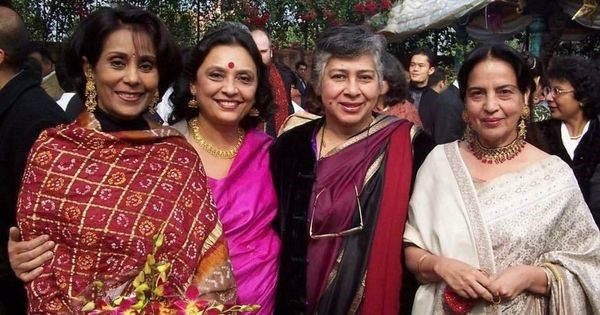The other night, while browsing through the news channels, I chanced upon Arnab Goswami covering his face with his hands and screaming, ‘Mujhe drugs do! Mujhe drugs do!’ Shaken, I quickly switched over to Times Now, where I saw Navika Kumar snarling at some hapless guest who’d dared to question Kangana’s motives in the Sushant Singh Rajput imbroglio. A while ago I’d witnessed Rahul Shivshankar on the same channel shouting at a guest for wasting the viewers’ time by bringing up the topic of China in Ladakh when they should be discussing Rhea Chakraborty.
Startled by the cacophony and the hate, I switched over to Amazon Prime and resumed watching Downton Abbey where the suspense had reached peak levels as the finger of suspicion began to point at the gardener or the butler—only one of these two could have pinched the Duchess’ letter opener, nobody else. England in the 1920s. That calmed me down somewhat.
My average time spent watching the news daily? Ten minutes—tops. That includes browsing several English news channels. Can’t take it anymore than that.
What has gone wrong with us? What have we become? It wasn’t like this before—trust me; I’ve been around long enough to know that. Has the media changed itself over the years to reflect our attitudes? Or has the media changed us to vicious, bloodthirsty animals? Chicken or the egg? Please tell me.
I recently chanced upon this photograph on social media—four ladies standing side by side facing the camera, resplendent in gorgeous saris and gracious smiles—the epitome of beauty and grace. It didn’t take me long to recognize them, as it won’t take anyone above 35 to do so—and I (sigh!) reluctantly admit to being older than that.

Image Credit: Capt. K. Ravindran, Image Source: Scroll website.
They are (L to R): Geetanjali Aiyer, Minu Talwar, Neethi Ravindran, and Salma Sultan—Doordarshan newsreaders who would read the news every evening with dignity, clarity, and grace in the 80s and 90s.
You remember Doordarshan, don’t you?
In the 80s and early 90s, it was the only viewing channel available. During a time when life was simpler, quieter, internet-free—an era long past. This was a time when the news was the most popular item –Krishi Darshan wasn’t much competition, to be frank—a programme not to be missed, by Indians in both rural and urban settings—and had the ratings of being the most-watched in the daily fare! Of course, there was no rival. DD1 was the only TV channel available to watch; secondly, news of the day’s events could not be missed despite the presence of the radio lurking in every home, since there were no repeat telecasts.
Notwithstanding the lack of competition, the news was read very competently and the standard of news reading was high, made so by a breed of professionals who, though appointed by the Govt. body that controlled DD1, totally justified their selection. It was difficult to say which newsreader was better than the other. Geetanjali Aiyer, Salma Sultan, Sarla Maheshwari, Komal G.B.Singh, Neethi Ravindran, Rini Simon, Tejeshwar Singh, Preet KS Bedi, Minu Talwar, Sadhna Srivastav, Pratima Puri…. I remember them all. They are difficult to forget.
There they would be on the screen—dignified, clear, no histrionics— reading out the news about India and the rest of the world, in a way that was endearing. Since there was no other channel, there was no contradiction to what was being said, and be it Amar, Akbar, Anthony, or Arvinder; all received the same content across the length and breadth of the country. It was news that was being reported…. not views being presented like today. In this simple broadcast, it was, in a manner of speaking, uniting the country.
But the star attraction to the Samachar in Hindi and the News in English was the way the newsreaders were seen on the small screen. Each had a characteristic appearance, distinct from the other, an unmistakable style of dress and a voice, diction, and delivery that could easily be distinguished as belonging to a particular newsreader. Even if one was not watching the TV screen, one could easily recognize the voice. At least I could.
Salma Sultan was famous for her dimple, and the signature rose tucked under her left ear in her hair. Minu Talwar made my heart skip a beat every time she flashed that dazzling smile at the end of her broadcast. The voices of Rini Simon Khanna and Shammi Narang still remind you today to stay clear of the doors if you are travelling by the Delhi Metro. Nobody shouted or snarled. There were no guests on panel discussions to humiliate, no sensationalism to increase TRPs, no cacophony to give one a headache….
And now? A plethora of channels, 24x7 availability, plenty of repeats…. yet nobody is really interested in what is being dished out non-stop. Nobody stays on one channel for too long. The din silences the voices. Do you recall Arnab on NDTV in the early 2000s—before Republic, before Times Now? He was subdued and dignified—quite ‘bhadro’ in Bong parlance. What the hell happened since then?
I repeat—what has gone wrong with us? What have we become? No, it wasn’t like this before.
Oh well, I’d better get back to Downton Abbey…. dying to know if the butler did it.
Beetashok Chatterjee is the author of Driftwood, a collection of stories about Life at Sea. A ship’s captain by profession, he joined the Merchant Navy at a young age and now misses it, having just retired after completing more than forty years at sea.
His book is available on Amazon. Click here.


Comments